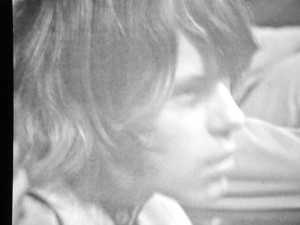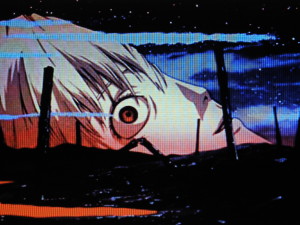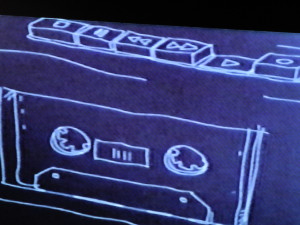
Dank Uwes Hinweis konnte ich vor etwa zwei Wochen zu einer Uhrzeit, zu der 70 Prozent der Manafonistas wahrscheinlich friedlich ihre ersten REM-Schlafphasen durchlaufen und 10 Prozent vielleicht schon ihre ersten Klartraumübungen absolvieren, ein denkwürdiges Konzert im WDR verfolgen: Die vollständige Fernsehaufnahme des Auftritts der Kölner Gruppe Can live im Winter 1970 in Soest. Erst ein paar Monate zuvor hatten der Keyboarder Irmin Schmidt und der Bassist Holger Czukay den Sänger Damo Suzuki von der Straße ins Studio geholt. Allein schon von der Art der Aufnahme unterscheidet sich diese Ausgabe des „Rockpalast“ von heutigen youtube-Einträgen oder Konzertaufnahmen im Fernsehen. Ein Zeitdokument. Die Kameras wurden immer wieder auch für längere Passagen auf das durchgehend sehr junge Publikum gerichtet, dem man anmerkte, dass es an einem wichtigen Ereignis teilnahm. Eine Gruppe saß sit-in-ähnlich auf dem Fußboden, andere hielten die Arme verschränkt, ein schlanker Junge mit engem Pullover tanzte – immer wieder im Bild – mit seltsam skurrilen Armbewegungen, eine blonde Frau mit Tuch im Haar packte erst ein Buch aus, dann eine Pfeife und schließlich produzierte sie Seifenblasen, wie ein Kind.


Und dann gab es bestimmt noch ein paar andere, hochsympathische Menschen, eher verborgen. Wenn ich auch Damo Suzuki ein gewisses Charisma nicht absprechen möchte, so mochte ich doch die Stücke am liebsten, in denen er sich im Hintergrund hielt. Wunderbar psychodelisch und mein Lieblingsstück dieses Konzertes: Paperhouse. Interessant ist auch der Titel „Vitamin C“. Das müssen nicht Okraschoten sein.
Und dies ist ein Teil der Playlist:
1) I Feel Alright
2) Mother Sky
3) Deadlock
4) Bring Me Coffee Or Tea
5) Sense All Of Mine
6) Don’t Turn The Light On, Leave Me Alone
7) Paperhouse









